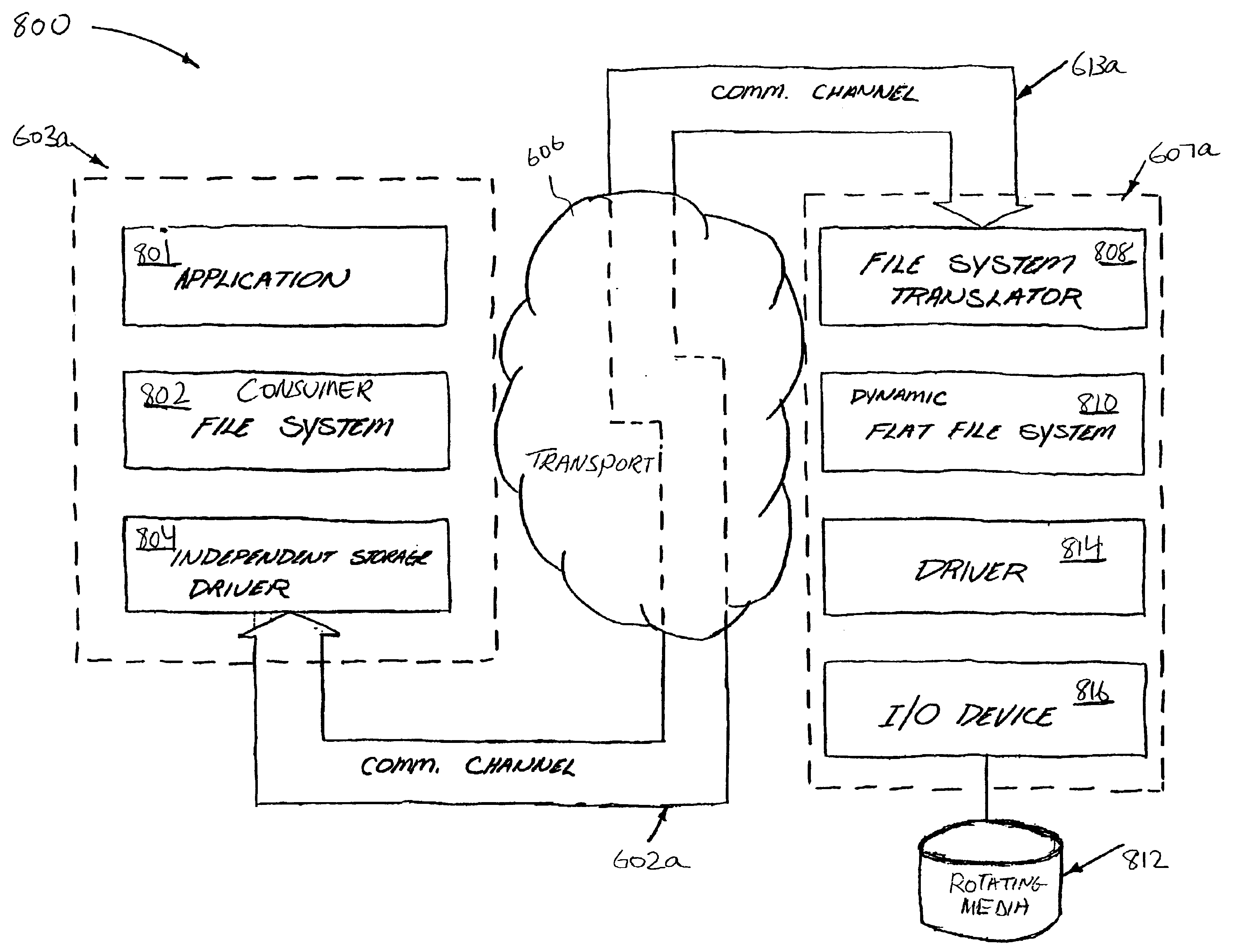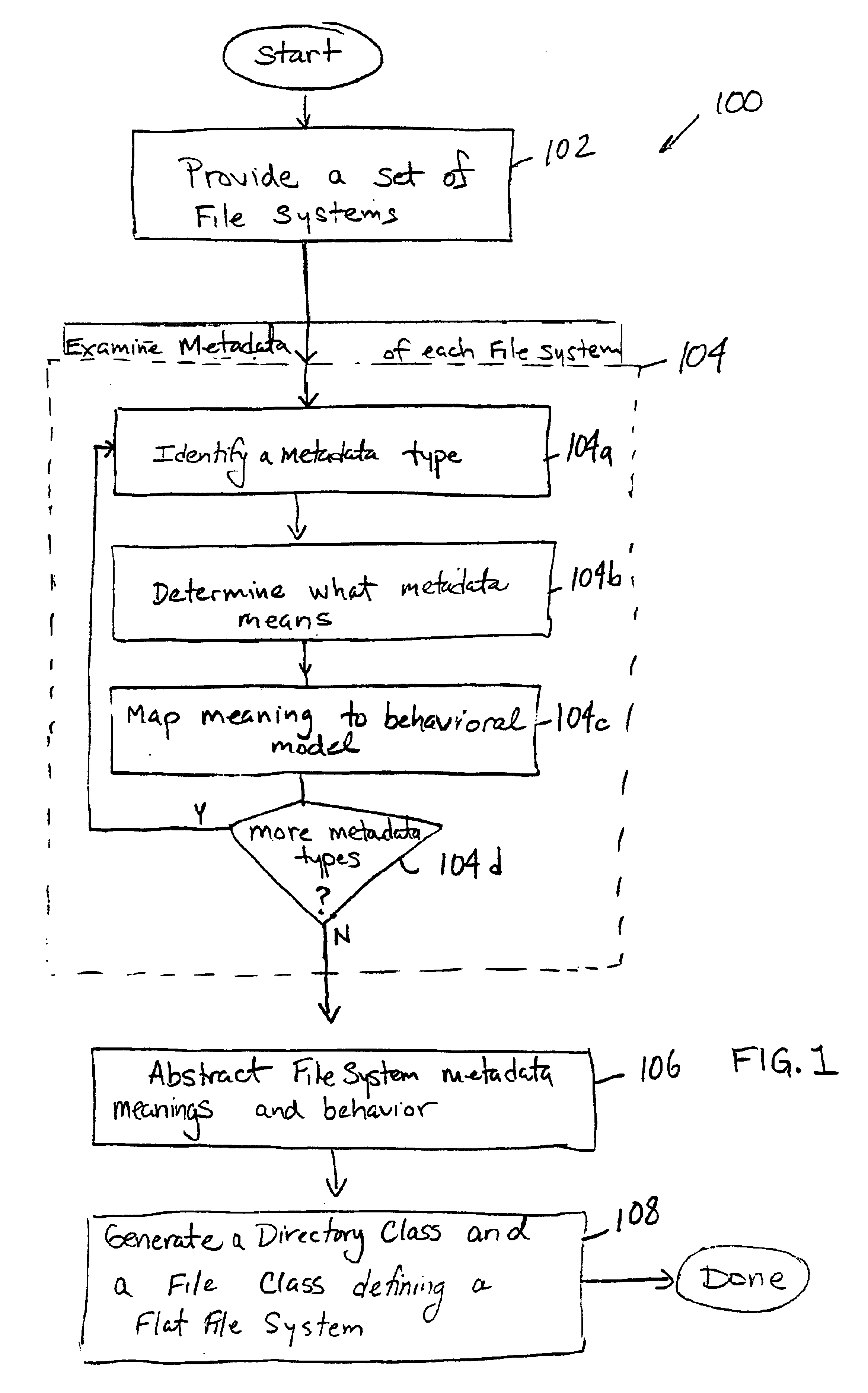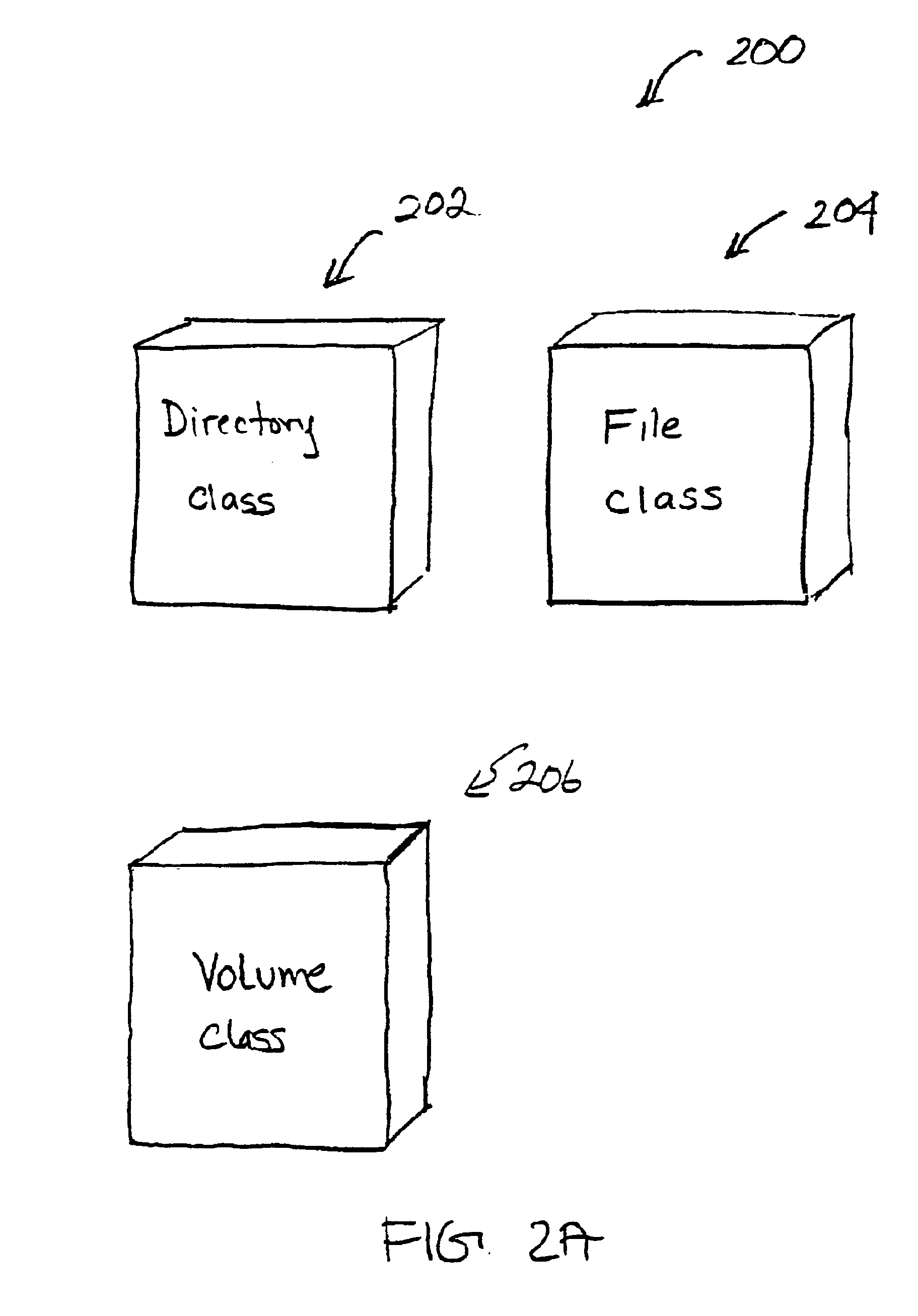File system translators and methods for implementing the same
a file system and translator technology, applied in the field of computer systems, can solve the problems of incompatibility with each other, inability of different file systems to directly share the file data of other file systems, and children's total ignorance of the identities of their parents, so as to facilitate simultaneous transparent access and facilitate efficient and transparent communication
- Summary
- Abstract
- Description
- Claims
- Application Information
AI Technical Summary
Benefits of technology
Problems solved by technology
Method used
Image
Examples
Embodiment Construction
Inventions for a file system translator capable of enabling efficient and transparent communication between nodes having heterogeneous operating systems and / or associated file systems are disclosed. In the following description, numerous specific details are set forth in order to provide a thorough understanding of the present invention. It will be understood, however, to one skilled in the art, that the present invention may be practiced without some or all of these specific details. In other instances, well known process operations have not been described in detail in order not to unnecessarily obscure the present invention.
As an overview, the present invention enables this transparent communication by providing consumer computer systems capable of generating file I / O requests with a driver that supplements requests made to an I / O node so as to enable operations on data managed by the I / O node. The I / O node will preferably include a translator layer that detects the requests for a...
PUM
 Login to View More
Login to View More Abstract
Description
Claims
Application Information
 Login to View More
Login to View More - R&D
- Intellectual Property
- Life Sciences
- Materials
- Tech Scout
- Unparalleled Data Quality
- Higher Quality Content
- 60% Fewer Hallucinations
Browse by: Latest US Patents, China's latest patents, Technical Efficacy Thesaurus, Application Domain, Technology Topic, Popular Technical Reports.
© 2025 PatSnap. All rights reserved.Legal|Privacy policy|Modern Slavery Act Transparency Statement|Sitemap|About US| Contact US: help@patsnap.com



